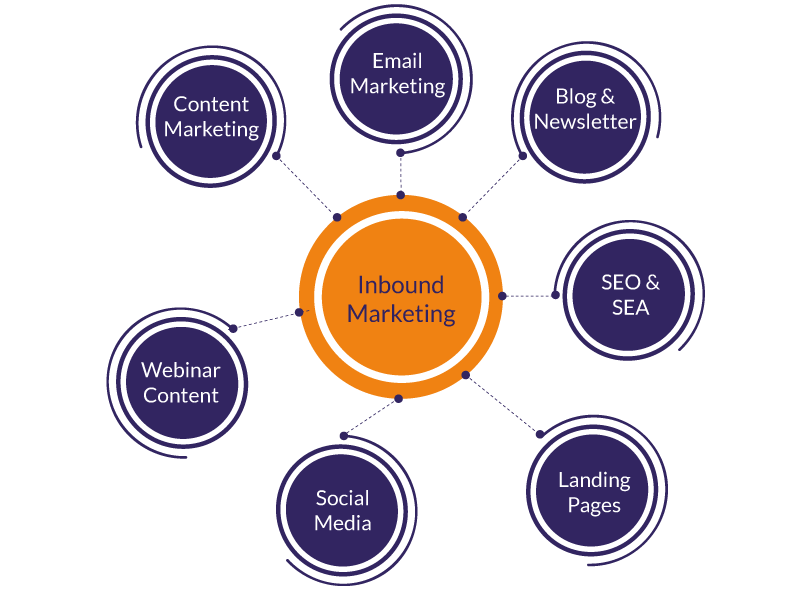
The Inbound-Marketing definition from Wikipedia is very easy to read. According to it, "inbound marketing (English inbound "incoming") is a marketing method based on being found by customers. It is in contrast to classical outbound marketing, where messages are sent to customers as is common via direct mail, radio advertising, television advertising, flyers, spam, telephone marketing, and classical advertising. In addition to content marketing methods, inbound marketing also makes use of customer acquisition and retention measures such as e-mail marketing, CRM, and lead nurturing, which can be supported by marketing automation.
The term inbound marketing has been coined since about 2006 by the founders Brian Halligan and Dharmesh Shah of the American inbound marketing software manufacturer Hubspot. However, the conceptual foundations of inbound marketing go back much further. A prominent proponent of so-called pull marketing or permission marketing was already the American marketing guru Seth Godin at the end of the nineties. In his blog post and book of the same name on permission marketing, he impressively predicted the increasing failure and decreasing cost efficiency of outbound marketing instruments such as advertising.
Interestingly, the inbound marketing definition of HubSpot is derived directly from the distinction between outbound and inbound marketing. Inken Kuhlmann, Hubspot's marketing director for the German-speaking countries, therefore defines inbound marketing as follows: "Outbound and inbound marketing differ significantly: While in outbound marketing the company tries to find the prospective customer, in inbound marketing the prospective customer should find the company. Marketers focus their efforts on ensuring that the search for the potential customer is successful". And indeed, the philosophy of letting customers find you through their interest can be seen as a constitutive element of inbound marketing in practice. It is simply a great sense of achievement when customers contact the provider company of their own accord after they have already studied a great deal of information about the offer, downloaded content and become increasingly aware of their actual needs. We know from our own experience and from the experience of our B2B and B2C customers: It works.
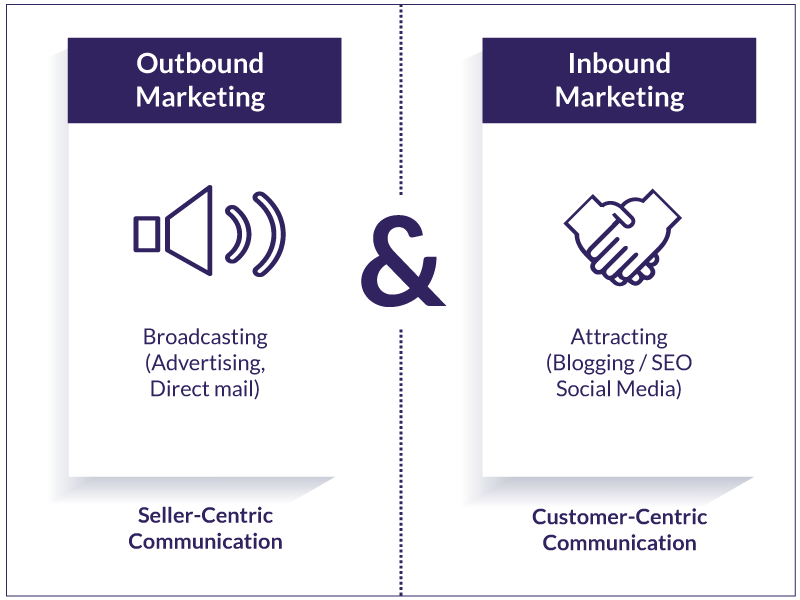
Inbound Marketing means attracting customers by offering them useful advice and supporting them in solving their individual challenges. The rise of customer-centric inbound marketing has become a kind of counter-movement to outbound marketing, which has dominated the traditional way of marketing, advertising, and sales.
Inbound marketing is not a new marketing discipline, but a new way of dealing with prospects and customers. In the traditional way we use marketing instruments such as advertising or direct marketing, we send unsolicited messages and interrupt customers in what they actually want to do. We call this provider-centric approach to outbound marketing or interrupt marketing (interrupt marketing).
With Inbound Marketing, you use the information and search behaviour of your customers and prospects. You provide people with exactly the content they need - exactly where customers are looking for it. That's how you build real relationships with prospects - right up to the point of purchase and far beyond. That's how you turn strangers into new customers of your company. And you turn your customers into active recommendations and advocates of your brand. Inbound is "Marketing the people love".
Inbound marketing breaks with old conventions of traditional marketing. In traditional marketing, as it is still written in many textbooks today, it is about managing many different marketing instruments. Advertising, direct marketing, online marketing, SEO, content marketing, social media marketing - all these marketing disciplines have developed independently of each other. And they work just as independently of each other in marketing practice. Many marketing departments are still functionally structured, i.e. arranged according to marketing instruments. There are specialists for each marketing area and the marketing manager, like a circus director, dabs the marketing disciplines working side by side, which have no common language.
It's different in inbound marketing. Here a marketing manager acts more like a conductor and an orchestra leader. The marketing orchestra has often been conjured up in the past - in the digital age it is becoming a reality. Inbound marketing thinks in terms of the customer and puts all marketing instruments at the service of a common goal: to offer an individual customer experience along the customer journey.
This places new demands on marketing managers. The focus is not only on the mastery of all online marketing instruments but also on virtuoso interaction with real customers with whom they interact and communicate in real time - through inbound marketing software. This is why inbound marketing managers are rarely responsible for specific marketing instruments, but rather for specific customer types (buyer personas) or inbound marketing campaigns.
Inbound marketing combines all marketing instruments. What does an inbound marketing campaign look like? You analyze the information needs of your customers with Buyer-Persona Management, develop the right information offers with Content-Marketing, make them available directly on the website in an SEO-optimized way via Online Marketing, optimize the user experience of the corresponding webpages of your website, promote your content offer 10 minutes later via Social Media Marketing and, if necessary, place online advertising or Search Engine Advertising (SEM) such as Google Ads in well-running campaigns to strengthen your online advertising or search engine advertising. Time requirement? Maybe half a day or a whole day. Staff requirements? You yourself as an inbound marketing manager and maybe your Inbound Marketing Agency.
Inbound marketing is replacing many old marketing agencies. You have an advertising agency, a social media agency, a direct marketing agency, a PR agency, an online marketing agency, and an SEO agency. Have fun coordinating a single real-time campaign to respond within hours to a favorable opportunity in the market and media. In inbound marketing, you are relying on a new type of agency that takes over the tasks of many classic marketing agencies in one. This is extremely demanding, requires a lot of experience on the agency side, but makes life much easier for you as a branding or marketing manager, helps to conduct the marketing orchestra, and noticeably saves the marketing budget. Here you can learn more about the topic: Inbound Marketing Agency.
In inbound marketing, it is not the know-how about specific marketing instruments that is decisive but rather thinking in terms of the interrelationships between the effects of the various marketing instruments. There are three marketing components that are indispensable for the planning and execution of all marketing measures in the digital age: SEO, content, and social media. These three marketing areas represent something like the "meta-competencies" of modern marketing.
Marketing Automation - Never before has the marketing job been so demanding and so easy at the same time as in the times of inbound marketing. Demanding, because the many instruments of online marketing require a whole phalanx of marketing software that first needs to be mastered. These include SEO tools, the content management system for websites and blogs (CMS), social monitoring software, email marketing software, etc. This does not make the marketing job any easier. But at the same time, marketing automation has established itself, which integrates and coordinates the work with all marketing tools and controls them in real-time across all communication channels. Such Inbound Marketing software is already firmly established in almost all large companies and is also becoming increasingly popular in medium-sized businesses. Software solutions such as Hubspot, Marketo, Oracle Eloqua, SAP Marketing Cloud, Salesforce Pardot, or Act-On offer all-round packages for companies of all sizes and in all industries. Working with these software packages is easy to learn and is forever part of the daily work of marketing managers like the telephone and email accounts.
Within a few years, inbound marketing has become firmly established in the modern marketing mix. The visible, quick successes, the measurable marketing ROI, the effective lead generation and the increase in the power of the entire marketing convince more and more marketing and sales managers. Inbound marketing is becoming a proven management methodology in the digital age and is cost-effective in the long term compared to the increasingly expensive outbound marketing of online and TV advertising. This is why inbound marketing has long been of interest not only to corporations, but especially to small and medium-sized companies.
Inbound marketing is a highly effective method of generating a high level of response in the market, attracting potential buyers, and boosting your own reputation. You position and establish yourself as the thought-leading authority in the market on the topics that are important to prospective customers and customers. Even more than that: in the long term, you create your own network of highly motivated (intrinsically motivated) customers who actively participate in disseminating the content of their opinion leaders (thought leaders) and publish it, for example, in their own blogs. In this way, inbound marketing can build up opinion leadership via viral effects. The more successful your own content-oriented inbound marketing is, the more independent you make yourself of paid advertising, for example. One has created one's own access to prospective customers and customers and no longer has to buy it e.g. in the form of paid advertising space.
In Lead Management and especially in lead generation, i.e. the acquisition of new qualified interested parties, classical advertising fails. With outbound marketing such as e-mails or direct mails to purchased addresses, you create neither trust nor any customer benefit. Inbound marketing, on the other hand, gives information seekers the right content, which often appears so valuable that a prospective customer is prepared to register with his or her contact data on the information provider's website in return for using an information offer (e.g. eBook, whitepaper, online test).
Inbound marketing has complete customer management in the digital age in view - with all the steps needed to win and inspire customers on the Internet.
Studies of the American software provider Hubspot prove: With inbound marketing, up to 200% more traffic can be brought to your website and 10 times more leads can be gained. Inbound marketing increases the number of prospective customers ready to buy by 150% because inbound marketing software automatically maintains and develops the contact between the brand and prospective customers.
With inbound marketing, you produce high-quality and beneficial content that is precisely tailored to the interests of your potential customers. In this way, you lead customers to the products and solutions they have been looking for on the web. At the same time, you create traffic to your website in a natural way, build up relationships there and cultivate these relationships (lead-nurturing) in a targeted manner right up to the conclusion of the purchase.
You centrally control all interactions with your customers. From the first contact to the conclusion of the purchase, you create high added value for customers through content and advice. In this way you create a superior and consistent customer experience. You create individual experiences and addresses that are precisely tailored to the prospective customer and their phase in the buying process. This makes you a trusted partner for your potential customers.
Inbound marketing is an effective sales initiation. With inbound, you offer customers on the Web the information and value-added services they need. That builds trust. Successively you will receive more information from your prospective customer about his needs and individual requirements. This enables you to make customer-specific offers and address customers efficiently - exactly when your potential customer is open to it.
Inbound marketing software shows you in detail at all times how successful your marketing activities are - and how you can further increase your success. You control your marketing campaigns from a central dashboard. You can access professional marketing analytics and see your marketing return on investment (marketing ROI). You track the acquisition of leads and new customers in real-time and optimize the ROI of your measures in real-time.
Inbound Marketing software shows you in detail how successful your marketing activities are - and how you can further increase your success - at any time. You control your marketing campaigns from a central dashboard. You can use professional marketing analytics and see your marketing return on investment (ROI). You track the acquisition of leads and new customers in real time and optimize the measure ROI in real time.
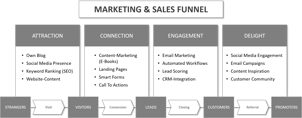
With inbound marketing, you provide your customers with convincing arguments instead of ready-made advertising messages. You provide people with exactly the content they need at the right time. With high-quality content, you can effectively convince new customers of your authority.
You gain trust and build relationships. You lead customers to the products and solutions they are actively looking for on the Web. When acquiring new customers, it is necessary to have a view of the individual potential customers, because after all, every buyer goes through his own individual information and purchase decision process.
The inbound marketing methodology can best be imagined with the four phases you build and strengthen a customer relationship.
First of all you create attention and attraction for your company, for your content and for your website, so that potential customers can perceive you in their decision-making process in the first place.
In the second phase of the inbound marketing method, the aim is to establish a connection to the potential customers among the visitors of your web presence (blog, website, social media presence), which ideally comes from this potential customer himself.
In the third phase of inbound marketing, you will build on the connection to the potential customer known by name (lead) once it has been established and provide targeted help with the respective decision-making problems with neutral advice and assistance.
Once you have built up trust, become a relevant solution partner from the customer's point of view, and have now acquired a new customer, the fourth phase begins: the Delight Phase or also the Deployment Phase or Post-Purchase Phase. Here your goal is to maintain the enthusiasm of your acquired customers at all times, to increase it, and to win your customers as recommendations.
In inbound marketing, you will constantly work in parallel and simultaneously on all four phases of the inbound marketing methodology. Every day you are simultaneously busy generating new traffic for your web presence, generating new leads from this traffic, turning leads into customers through targeted lead nurturing and winning existing customers as referrers and supporting them in their word-of-mouth marketing. Inbound-Maketing requires the virtuoso handling of customer messaging. In this respect, it is real, customer-centric marketing.
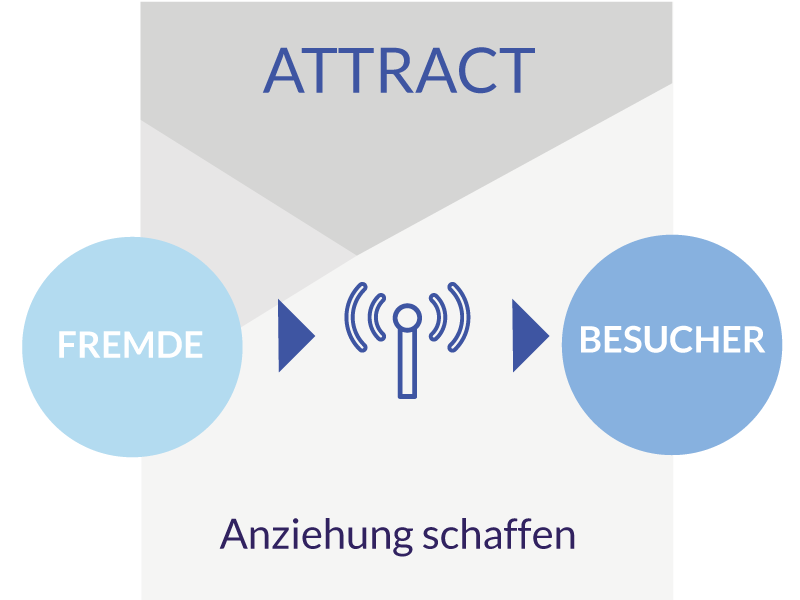
In the first step of inbound marketing, the focus is on customer acquisition. You should offer help to people on the Internet where they are looking for information. These are, for example, social media or search engines such as Google. Attract this traffic specifically to your website - because your website is the center of your inbound marketing.
You don't want just any website visitors, but the right ones. These are the interested parties whom you can really help to solve their problems. These visitors have the potential to become customers as well.
All beginning of inbound marketing is blogging. A blog is by far the best way to direct visitors to your website. To do this, you need to create informative and exciting content that appeals to and benefits your target customers.
In order to get information, they usually use a search engine. So make sure that you appear prominently in search engines for the corresponding keywords, the search terms of your customers. To do this, you must select the keywords carefully and analytically and create appropriate content keyword-optimized.
Share your content on social media. Get in touch with your contacts, prospects, and customers. Give your brand a human face on the web. Use your company's employees and management as a brand face and brand ambassador.
Optimize the content and structure of your website so that it appeals to your desired customers and encourages them to contact you. Transform your website into a helpful and interesting source of information.
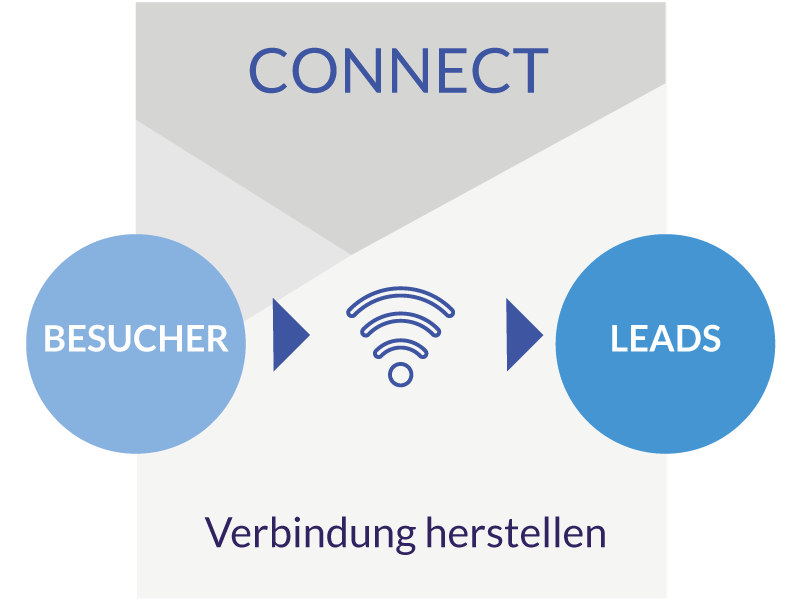
Once visitors are on your website, your next goal is to convert these website visitors into prospects. And to further qualify a prospect, you need his/her contact information, at least his/her email address.
Contact details are cash money in online marketing. If visitors to your website are to voluntarily give you this precious treasure, you have to offer them something in return. In return, you "pay" your prospects with helpful content offers such as white papers, eBooks, or checklists. The main thing is that this content is valuable for your new contacts.
Content marketing is the focus of inbound marketing. Content is the engine of inbound marketing. The classic tasks of content management apply to the creation of content as part of an inbound marketing strategy. These include strategy finding, content planning and conception, content production, and finally content promotion via owned media and paid media. Content promotion can also be supported by outreach via PR measures.
In return for the download of content, your prospective customer fills out a web form with his most important data. Optimize web forms to attract and motivate prospects. Rely on smart, learning forms. Such a form remembers information that has already been entered so that the prospect does not have to enter it again on his next visit. But he can answer further questions in the form, which were stored exactly for him.
For example, if your new contact downloads a white paper, he or she should be directed to a so-called landing page. A landing page is a specially designed web subpage on which he or she enters his or her contact details using a form in order to download the content offer. The sales team can use this information to get in touch with the interested party.
Call-to-Action (CTA) buttons are clickable fields that you place on your website directly next to downloadable content and include an action-asking text such as "Download Now". By clicking on the CTA, an interested party is taken to a form, receives his desired content offer after filling in his contact details and thus becomes a prospect or lead known by name. In inbound marketing, CTAs are of great importance for generating new leads.
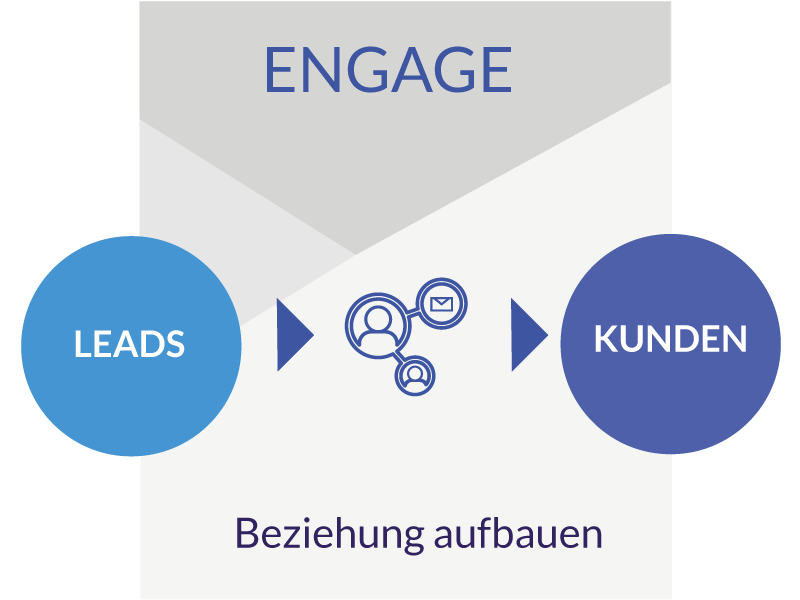
What do you do when prospective customers use your content and stay in dialogue with you, but are still far from ready to buy? With marketing automation, you conduct lead nurturing and lead scoring. This allows you to evaluate potential customers (leads) according to their interests and purchase intentions.
With your inbound marketing software, you can create chains of contacts that are specially tailored to the respective purchasing phase of the prospective customer. Workflows support you in this and take over many communication processes.
Link your CRM with your inbound marketing software. Record how new contacts develop along the customer journey. In this way, you can create a common view of the movements of your prospects and customers for marketing and sales.
You have the contacts, but how do you know which of these prospects are ready to talk to your sales team? By using a numerical lead evaluation of a prospect's buying affinity, the guesswork is eliminated.
Start flexible and multi-level email campaigns and direct mail campaigns for prospects and customers directly from your inbound marketing software. Optimize every element of your customer emails and track the performance of your email marketing in real-time.
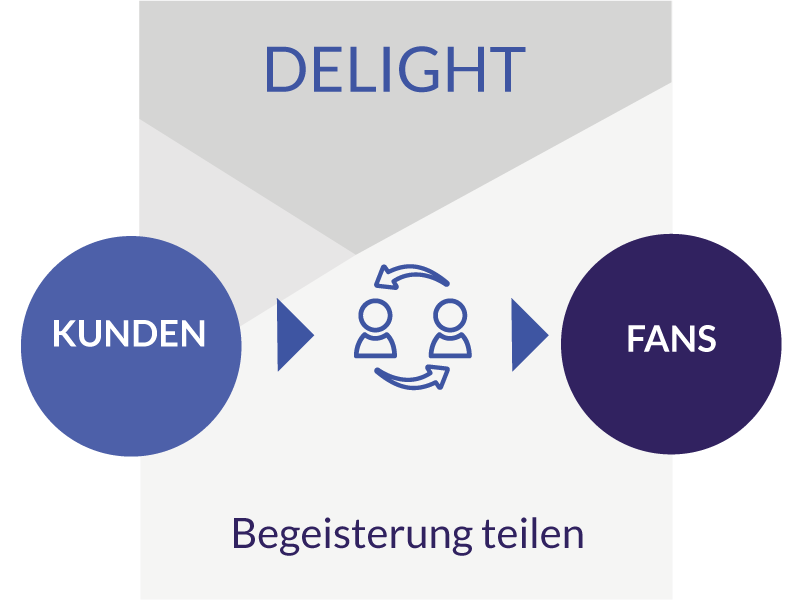
The actual customer relationship begins after the purchase. Customers want to be looked after, inspired and inspired by you for years. With inbound marketing, you strengthen customer loyalty, provide helpful suggestions for product use and ensure that your customers are happy to recommend your brand and products to others.
With inbound marketing software, you can manage all social media channels with the central dashboard of your inbound software. Start social media monitoring and individual dialogues in real-time with prospects and customers.
Expand the knowledge of your customers and guarantee optimal use of your products. With the help of your inbound marketing software, you can set up entire online courses or even a customer academy.
Email marketing is your direct line to your customers. Use emails to inspire customers regularly and to inspire them with problem-solving content. Develop exclusive content offers only for customers, promotions, and specials. Optimize your customer emails so that as many customers as possible use the profitable content.
Support your customers in their exchange with each other. Create your own community platform. Surprise with extraordinary user group measures and customer events.
Customers and interested parties receive the right information at the right place at the right time in the right format. This is not annoying for prospective customers and customers, but useful and helpful. This is "Marketing that people love."
Conduct interviews with customers and potential customers. Create a clear picture of the problems and information needs of your most important target customers or buyers. Create a buyer persona profile per target customer type. Describe the background, life situation, motives, wishes, and challenges of the buyer persona and consider how your products can help these ideal customers to solve their problems.
Analyze the typical information paths of your customers. Use the customer journey to describe the information and purchase decision process of your target customers or buyer personas.
Develop an overview of the information requirements in each phase of the customer journey. This is the basis for your effective and tailored content strategy.
Your content is the message that you convey to customers with your inbound strategy. You should, therefore, create sophisticated content that is tailored to your buyer personas. Consider content design as an ongoing process in which you integrate the know-how carriers of your company and, if necessary, agencies. Interested parties pay you for good content - with your contact details. In return for downloading a content offer, interested parties register with their email address. This can be the start of a long-term relationship.
No matter how good your content is, it will only become a marketing instrument if you use it in a targeted manner, advertise, promote, and offer it where people are looking for it. That is Content Marketing at its best. Content distribution often starts with social media posts that link to further information on the website (e.g. to a corresponding blog post). There a contact field (call-to-action button) advertises the content download. The next click leads to the landing page, where a website visitor identifies himself with his email address in return for the content download.

With the concept of the customer journey, inbound marketing has revolutionized the understanding of customer behavior.
In contrast to traditional marketing, inbound marketing pays attention to how people actually make purchase decisions and what help or information potential buyers need at every stage of their process.
We call this structured view of purchase decision processes the customer journey or Buyer's Journey. It comprises four phases:
About TLS
Contact
Newsletter